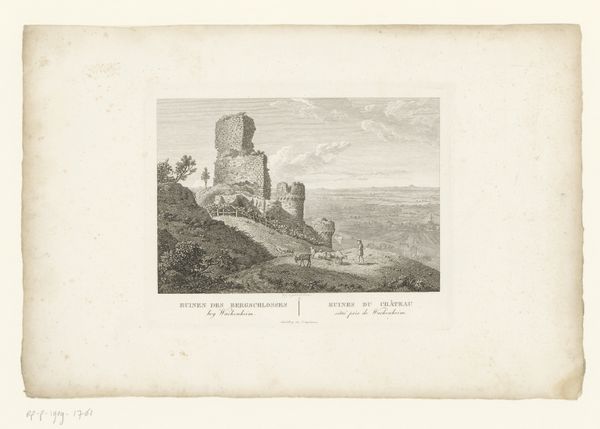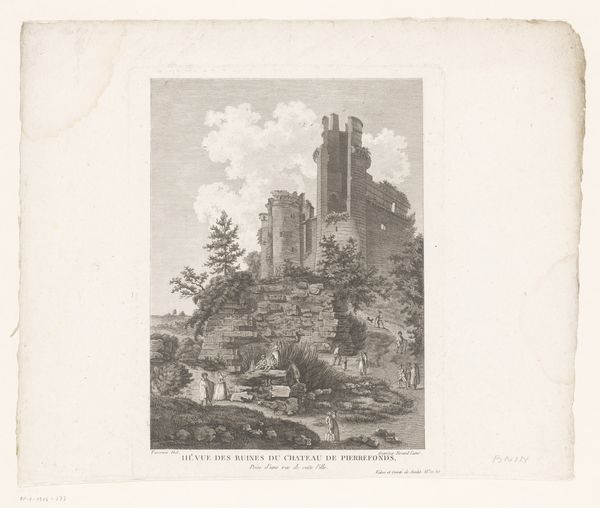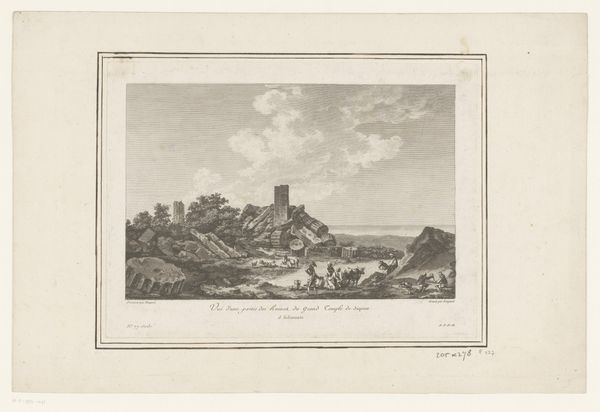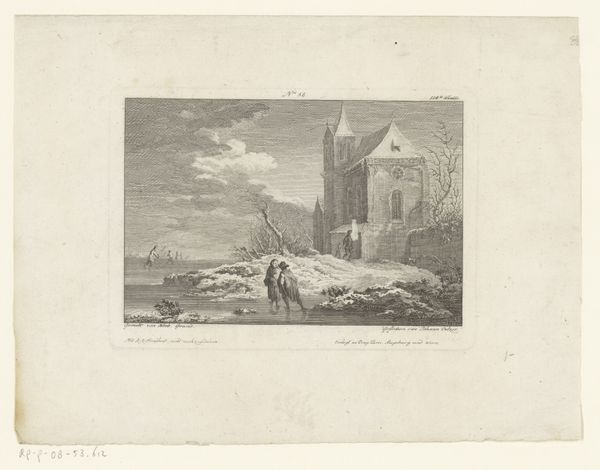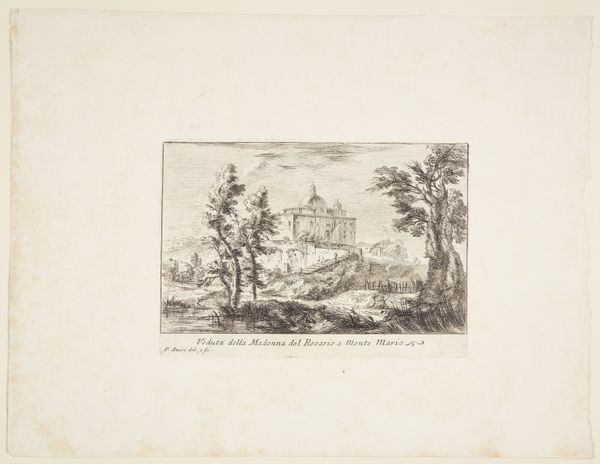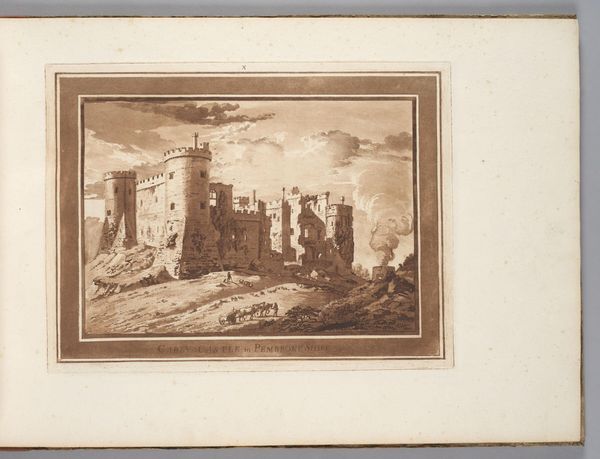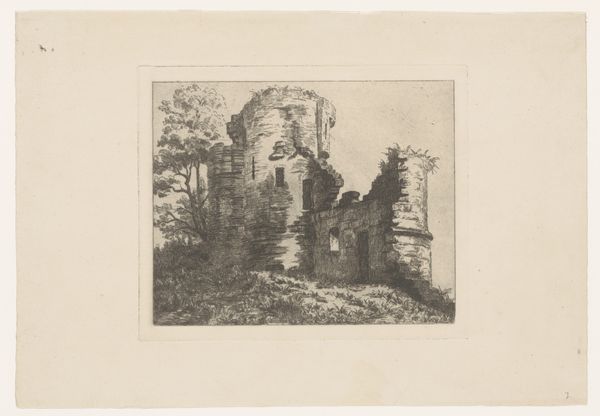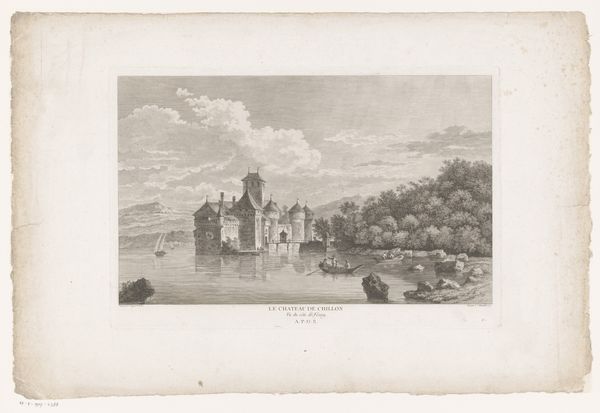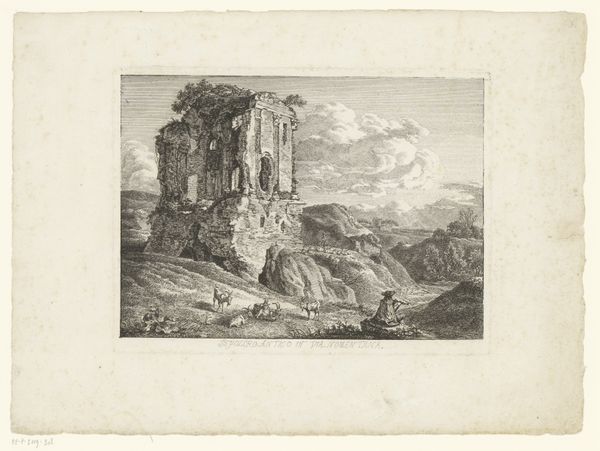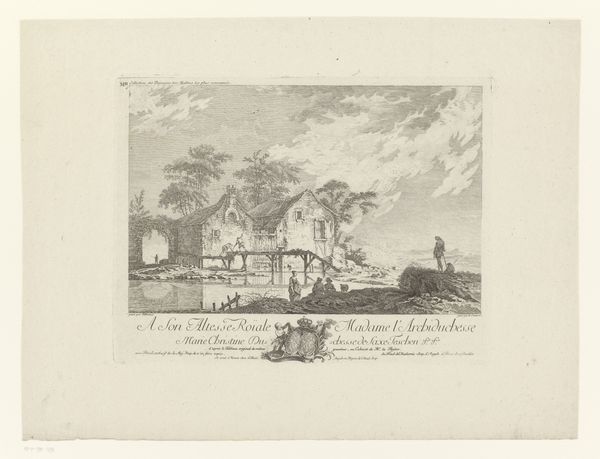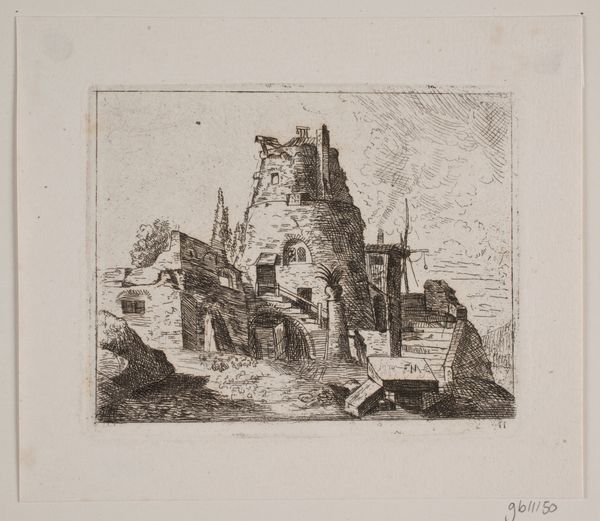
print, etching, architecture
#
ink paper printed
# print
#
etching
#
pencil sketch
#
old engraving style
#
landscape
#
romanticism
#
architecture
Dimensions: height 231 mm, width 292 mm
Copyright: Rijks Museum: Open Domain
Curator: We are looking at "Landscape with castle ruin" by an anonymous artist. This etching, created sometime after 1793, features delicate lines and a subdued, almost ghostly, tonality. Editor: It gives a melancholy impression. I see this crumbling fortress perched precariously. What kind of statement could this Romantic-era piece be making? Curator: The artist used etching to convey texture and depth. Notice how the layering of fine lines builds a sense of form in both the castle and the surrounding landscape, also it gives the piece an old engraving feel. The varying densities create light and shadow which play across the architecture. Editor: It's a commentary on power, the transience of even the most imposing structures. And what of those figures in the foreground? Are they oblivious, or somehow marked by that decayed spectacle? It reflects a fascination with ruins that swept through Europe at the time as a way to depict feelings and historical realities, it makes the viewer want to go back to the past and see what the glory of this location was when it was in use. Curator: You raise an interesting point. Looking at the image from a compositional perspective, the placement of the ruin dominating the landscape creates an unbalanced structure. Our eyes are naturally drawn upwards toward the fractured architecture. This heightens the ruin's symbolic weight within the frame. Editor: The decay could symbolize political turmoil and failed dynasties of the time and now it became a shell, used for something that is not known but is certainly inhabited, like the people depicted at the feet of it, which now they are looking from outside in. Is also to point out to classism, maybe? And does the structure look more menacing than attractive because of its location in altitude and in ruins. Curator: An activist perspective. And it prompts reflections on our relationship with history. The careful mark-making and composition create a powerful sense of longing for a past both majestic and fragile. Editor: These artistic choices invite us to think more critically. It reminds us to look beneath the surface, questioning and understanding what may or may not be immediately present when dealing with works of art.
Comments
No comments
Be the first to comment and join the conversation on the ultimate creative platform.
